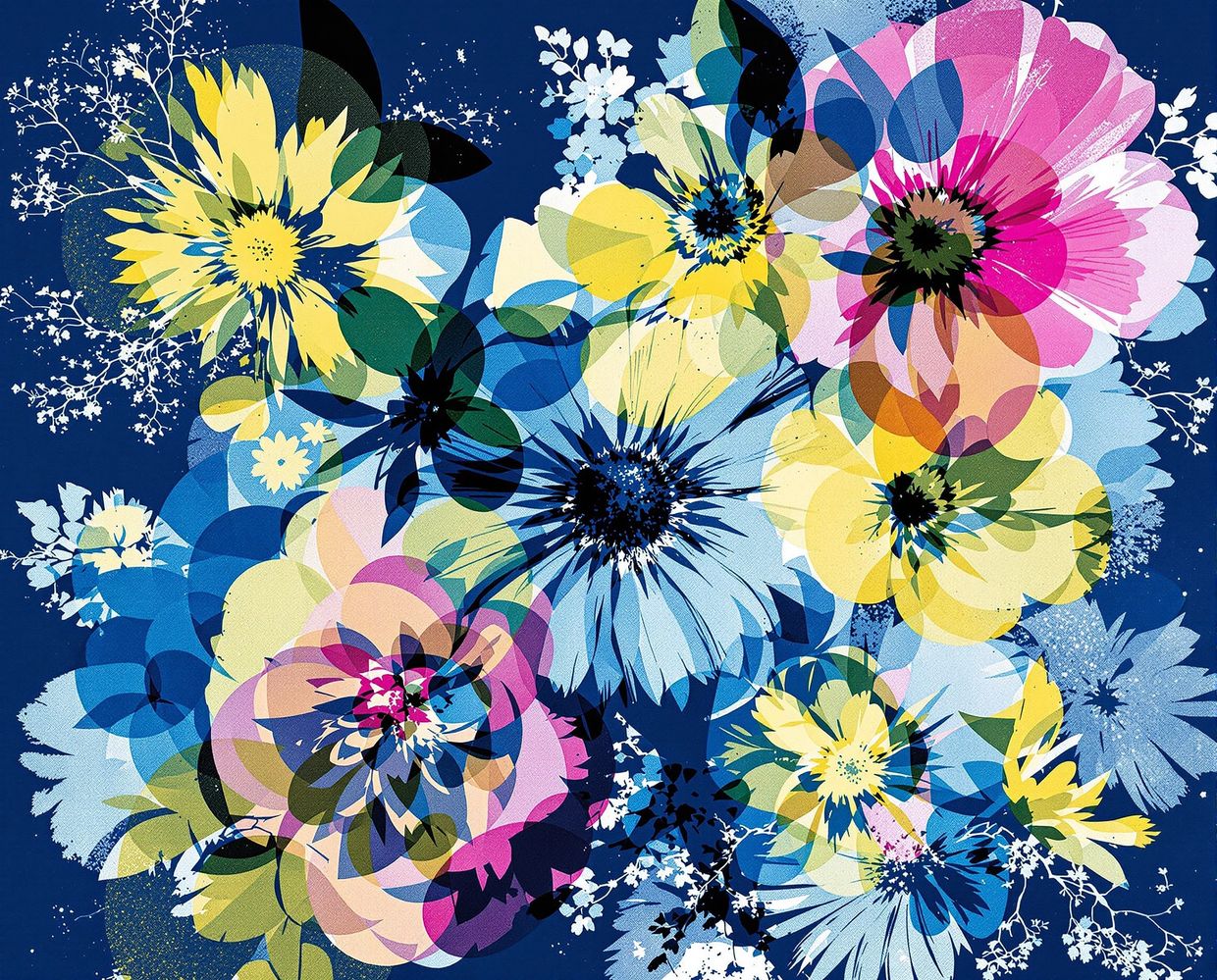CMYK: synthetic print florals

This series begins with the elemental pull of Prussian Blue — a deep, inky pigment that defines the cyanotype process. Invented in 1842 by Sir John Herschel, cyanotype was one of the earliest photographic printing techniques, prized for its simplicity and immediacy. By placing botanical specimens directly onto sensitised paper and exposing them to sunlight, practitioners like Anna Atkins captured nature in delicate silhouette, creating images that were both scientific records and works of art. In this project, the cyanotype’s unmistakable hue serves as a point of departure: a foundation from which everything else unfolds.
What starts in blue quickly fractures into a spectrum. The series expands its focus through CMYK — the four-colour printing process of cyan, magenta, yellow, and black that revolutionised modern printing in the 1890s, when newspapers began to publish colour comic strips. Where cyanotype is singular and elemental, CMYK is layered, synthetic, and vibrantly commercial. Flowers — both real and imagined — become the vehicle for this exploration: petals and stems rendered in halftones, overprints, misregistrations, and colour floods. The precision of prompt engineering mirrors the precision of printmaking itself; what began as experimentation evolves into a kind of digital craftsmanship, each image honed through iterative adjustments to achieve crispness, depth, and balance. The results oscillate between the tactile and the virtual: works that evoke the chemistry of traditional printing while declaring their digital origins.
None of these images has been inside Photoshop. Instead, they were created with Flux 1.1 Pro Ultra, an advanced AI image generator capable of producing highly detailed, photorealistic images. They do not aim to replicate cyanotypes or offset prints in a literal way; instead, they reinterpret and expand their visual language — transforming familiar botanical motifs into layered, luminous digital compositions. The choice of flowers as a motif connects this work to a broader continuum within my practice, echoing projects such as Anthos, Lignis, Vitris, and Thalis. Each image becomes both an exploration of print aesthetics and a meditation on the expressive possibilities of artificial intelligence: a dialogue between colour, technology, process, and imagination.
“Blue has no dimensions; it is beyond dimensions.” —Yves Klein
Copyright © David Name 2025.
All rights reserved.